Share your knowledge & learn from experts
Because prepping and community go hand in hand
What car flashlights and associated batteries do you use?
One of the areas that I am concerned with is emergency flashlights stored in our cars. I leave these flashlights in the glove compartment for long periods of time without thinking about them. Too often, when you go to use them in some type of an emergency, the flashlights are dead. The batteries are either discharged or leaked. The extreme heat and cold are very rough on the batteries.
I have been using Lithium Ion rechargeable batteries (18650) and pulling them out every 2 months to recharge. I live in Southern California, so cold is not that much of an issue.
My question is what is the best batteries to use in these extreme conditions. What do you guys use?
Read MoreHow to pack a BOB
I’m new to this forum so please bear with me. I have been following the BOB by priority kit, working all the way through to level 3. I am new to prepping so I am having trouble figuring out how to pack everything in. I’d appreciate advice or even better a tutorial or guide. If this has been asked before I do apologize.
Read MoreNeed bug out bag packing tips
As a terrible packer, I thought I’d start this thread to collect best practices for how to maximize space in our packs. Specific tips welcome! To start us off, here is my current challenge. I bought a nice fleece as my top layer. Very comfy. But I’m a large person and the fleece is thick. It takes up a ton of room! I’ve been wondering if there is a way to compress clothing for storage in the BOB?
Read MoreIncreased news coverage on secession and civil war
If you haven’t been following the activities of the Tranisition Integrity Project, I highly recommend you start. I outline their activities in the blog post below, along with suggestions everyone can undertake in response to the threat.
In short, political leaders are war gaming post-election scenarios in which states threaten to secede the Union if their preferred candidate doesn’t become president.
This is not tin foil hat stuff. The New York Times and Boston Globe are reporting on it.
https://paultmartin.com/blog/f/project-dealing-with-the-growing-talk-of-civil-war
Read MoreWorried about the fall season
I find myself increasingly worried/stressed about the upcoming fall and winter, and for a bunch of different reasons. So I thought I’d make a list, and see what others think of it:
Extended unemployment is running out Eviction moratoriums are ending Even if we get another round of PPP, inventories in many retail outlets are still very down, so there’s not much to buy even if there was foot traffic. So commercial retail looks grim right now. New jobs numbers are very very bad. (We’re still bleeding jobs, and the “gains” in the previous stats were from seasonal adjustments and not from reporting). Flu season + COVID = overloaded hospitals, possibly in places like NYC that thought they were done with all that. The November election Classes in many school districts are going online-only, and that is going to wreck social cohesion (parents in my extended network are FURIOUS at this). It’ll also be bad for the economy because some won’t be able to work, or if they do productivity will be lower. Finally, the pandemic is well and truly back on, at least here in the South. If we’re destined to go the full Wuhan in Texas, the timetable for that would probably be right around back-to-school or a little after.All of these things seem to be converging in a kind of vortex of awful that will make landfall sometime in or after September. Even if just half of them turn out to be real bad, that is enough to make social cohesion and instability even worse than it has already been this summer.
Thoughts? Am I being too pessimistic, here?
Read MoreSingle female prepper resources?
I was just wondering if anyone knew of any single female preppers that may have blogs, YouTube channels, etc.
The prepping community seems to be male dominated and geared towards families (but I’m very new so I could be wrong!) And I feel like being a single female prepper is sort of a unique thing.
Read MorePrepping my computer
I have all of my documents, family pictures, videos, songs, and more between my two devices, my desktop computer and my phone. I really want to prepare for the eventual computer crash, lightening surge, burglary, or virus that can affect my computer and phone and would take out my family memories, tax documents, recipes, etc…
What are some things I can do to prevent me from having my devices crash, and if they do crash should I have some sort of back up on another hard drive or on the cloud?
Read MoreImproving your vehicle maintenance
What sort of preventative maintenance do you do on your vehicle to enhance your vehicle’s readiness in case of an emergency?
https://paultmartin.com/blog/f/project-improve-your-vehicle-maintenance
Read MoreUS capitol protests, what can we learn?
Sure was a crazy day yesterday (1/7/21) if you saw the news, where protesters charged the US Capitol building to delay a vote.
Let’s not talk about the politics about it. But instead do a little thought experiment.
When the protesters were breaching the building and the employees had to evacuate.
Accord to this tweet, it looks like they had little go kits that they could grab.
If your place of business entered the media for some negative reason, and you had dangerous protesters trying to get into your building, what would you do? Do you know multiple escape routes? Can you just pick up and go in a moment’s notice? What if they break into your building before you can have a warning and now you are confronted by them?
Just some things we can think about and learn from this experience.
Feel free to answer any of the above questions, and add in any other things you may have learned from seeing this yesterday.
Again, no talking politics…
Read More
Emergency lighting
Hi. I’m Ron Brown, author of “The Non-Electric Lighting Series” on Amazon. Emergency lighting is my area of expertise but I’m brand new to The Prepared. In this write-up, I’d like to share a few ideas on the topic of emergency lighting. I’m not here to sell anything. Or editorialize. I just want to share some ideas.
Let’s say you’re at home and the lights go out. Sure, you have a flashlight. But the batteries are dim and getting dimmer. You scrounge through the kids toys, the toothbrush, and the carving knife and find a few batteries. But they don’t fit your light. Or you need two and can only find one.
May I suggest a collection of cheap flashlights — $20 total for the whole bunch — that will run on any battery you can find. And let’s make that any battery SINGULAR. One D. One AAA. Etc. Here’s a link to a YouTube article I wrote that specifies, by brand and part number, flashlights requiring just one battery. The listing starts at 2:18. It’s worth a look-see. https://www.youtube.com/watch?v=kv7Bx6usT-g&t=1s
Next topic. Vegetable-oil lamps. They produce a candle-size flame and have been around since biblical times. Call it proven technology. You can Google for them and get how-to information. Or search YouTube for them. Or read “Olive Oil Lamps &c.” by yours truly. It’s Book 2 in “The Non-Electric Lighting Series.” The beauty of vegetable-oil lamps is that they require ingredients you already have on hand. Good stuff to know if you’re away from home when the Big Blackout occurs.
Let me offer a few tips. First, the wick in a vegetable-oil lamp needs to be cotton (a natural fiber). Oil is fed to the flame by capillary action. Polyester is a man-made fiber. Polyester will melt in the heat of a flame. Melting kills the capillary action. That means no lamp. The fluff in the top of your vitamin bottle might be cotton or it might be polyester. Who knows? But you really can’t trust it to make a reliable wick. That much we do know.
Second, vegetable oil can be fiendishly difficult to light. But a drop of flammable liquid (cigarette lighter fluid or gasoline) will solve the problem. And how to get one drop with no eyedropper? Off the tip of a teaspoon. One drop of gasoline, BTW, is not going to explode and blow the windows out of your house.
Third, that same characteristic of being difficult to light makes vegetable-oil lamps very safe lamps. If you drop and spill a lit kerosene lamp, odds are you’ll start a house fire. But if you drop and spill a lit vegetable-oil lamp you will for sure make a heck of a mess but a fire is extremely unlikely.
Fourth, try to make one. Experiment. See what works for you. Don’t wait until the lights go out. It’s like sex. Reading about it and doing it are two different things. You need to know, ahead of time, what works.
Last topic for today, diesel fuel. This is info that’s really hard to come by. There are pressure lanterns with mantles that burn white gas (Coleman fuel). And others that burn kerosene. Pressure lanterns can produce a couple hundred watts-worth of light. But diesel? Are there any lanterns that burn diesel fuel?
Yes. Although they’re not sold or advertised for that. Most kerosene pressure lanterns will NOT burn diesel fuel. But a few will. IF you know what lantern model to use. And what lantern generator to use. And which cloth mantle to use. Book 6 of “The Non-Electric Lighting Series” is entitled “Kerosene Pressure Lanterns” and lists eight lantern models, originally designed for kerosene, that will burn diesel. I know they will because, in every case, I’ve done it.
And these lanterns are being sold on eBay as we speak. Can you picture a highway lined with abandoned tractor trailers, each one loaded with diesel fuel, and yourself (sitting in the dark) with no way to use it? IMHO, this is precious info. Info to tuck away against your time of need. This is prepping.
Read MoreMy BOB really needs some work…
Oh boy… where to start?
The quick lesson of this forum post is to check your preps. And here is why I say that:
About 3 or 4 years ago I decided to make a BOB. I didn’t have much of a budget to put towards it, so I just used things that I had laying around the house and bought a few smaller items. And for the past few years I told myself “You have your BOB, you are prepared in that area and you don’t have to worry about that anymore.”
I finally knew that something was wrong though when I went to go lift the bag and seriously couldn’t lift it. (I am in a wheelchair, and can’t lift too much like a normal person could, but still it was very heavy) And there isn’t much of a point having a bug out bag if you can’t even carry it. So I decided to record a video of me going through my BOB like a time capsule, not knowing what I would find.
https://youtu.be/LJNBa7ELvE4
My prepping knowledge has increased significantly in the past few years, especially thanks to The Prepared, so I knew what to look out for as I went through my old bag. Here is a summary of what I discovered about myself while going through my BOB in case you don’t want to watch the video:
I had one bag full of all the items for my wife and I. This is something I want to change and make two separate smaller BOB’s for each of us. Distribute the load, and if we ever got separated, we could survive on our own. Back when I built this bag, I kind of just threw old camping gear, extra things I had laying around, bulk first aid items, and old EDC things that I had since found better replacements for. This really is a budget bag and I spent so little on it. I guess I should go easy on myself because I did pretty good with being resourceful and making a step in the direction of making a BOB is better than not having one at all. I really lacked in some areas such as fire making, light sources, and tools such as knives, saws, and multitools. I had a bit too much in some areas such as just throwing all of my extra Mylar blankets in the BOB, and having quite a lot of first aid gear. Some items I just didn’t really need. While they would be nice, they are taking up valuable room and weight. Like the notebook, pen, and pencil. While better than nothing, some of the items really are horrible for a survival situation and should be replaced. Like my all cotton extra pair of jeans, t-shirt, underwear, and socks. These won’t give me much protection and help. I need to think about the most likely scenario for my bugging out. Will I bug out to the woods and camp and make fires? or will I bug out to a hotel and the fire making stuff will be pretty useless? I need to tailor my new BOB a bit more to what I think I will be doing. In the video I say that I want to split the one big bag into two smaller backpacks that I had just laying around. While I still want to do this, the two smaller backpacks that I show in the video are way too small and couldn’t hold the minimal gear I was putting into them. So I need to invest in a slightly larger and better bag.Here are some things that 4 year ago me did pretty good at:
I still like categorizing my things into gallon ziploc bags. So I just need to reach in for the first aid bag, or the shelter bag. I liked how resourceful I was by using things around the house like free sample shampoo in my toiletries kit, but probably should invest in other items not likely to burst in the bag.So I’m going to add a goal this year to improve my BOB. I want to make it more balanced. Weight, size, quality of items, and making sure each category is covered not too much or too little.
I will do an update as I make a new one and will present it in a very nice kit using The Prepared’s kit builder. But for now, I need to go back to square one and really work on figuring out what I want in there, and how to do it.
So what do you think? What would you rate my BOB? I give it a 4/10, better than nothing, but lots of room for improvement.
What are some items you recommend? Have you taken a look at your BOB recently? I think you probably should…
Read MorePrepping new year’s resolutions
With 2020 almost over (thank goodness!), many people make new year’s resolutions of things they want to improve on and do better the next year. The most common one people usually make is losing weight and exercising more.
While this is a great tradition, and for most of the month of January people usually stick to their goals, we tend to get lax and by February or March, many have let their goals go.
I believe that accountability is a way that can help encourage and remind us to keep going. Since this is such a great community, I want to do a little experiment and see if people would be interested in not only sharing their new year’s resolutions related to prepping, but to be a way that others can check in on them and remind them of their goals if they would like. And if you are reading this in March, June, or August, feel free to hop in at any time!
Here is the format if you would like to be involved. List your goal and if/how often you would like people to check in with you on how you have accomplished it.
For example:
Goal: Do some form of exercise 5 days a week for the entire year.
Check in: Yes, if someone could ask me for an update at least once a week, that would be extremely helpful.
Other info: I bought a calendar specifically for this goal. I’ll mark off on there to keep track of my progress. I want to be in better shape so that if I had to bug out, run for my life, or just work on surviving after a disaster, that I would be more prepared physically to do so. I’ll do a mix of strength training and cardio.
I hope this can be a valuable tool for everyone to think about what they can do better to prepare, but also to continue to build up this great community of friends.
Some other prepping new year’s resolution ideas: Lose weight, build a BOB, have at least 3 months of food storage, learn how to can food, start a garden, learn how to reload your own ammo, share a prepping idea with a friend and family member each month, store 50-100 gallons of water, take a first aid class, read 4 books about preparedness, learn basic orienteering, learn to change the tire and oil on your car…
Read MoreDoes anyone have a rain water harvest system?
(random rain collection system from Google)
I’m interested in collecting rain water as a backup source, but have many questions and don’t know where to start. I’ll probably leave this source to watering my garden, but want to be able to drink, cook, and bathe with it if needed in an emergency.
Does anyone here collect rain water? Do you use your roof? How do you filter and prevent contaminates like bird droppings, insects, algae growth, and chemicals from the roof tiles?I’d love to see pictures of yours if you do!
Read More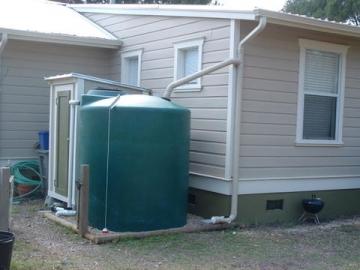
Dedicated shelter/sleeping bag/pad for BOB — is it a must?
I have a pretty solid/complete BOB at this point, but there is one thing I keep putting off adding to my pack: Shelter, and the Level 2 sleeping apparatus that would go in a shelter like bags and pads. We’re outdoorsy types, so we have (lightweight, good quality) tents, pads, and sleeping bags. I don’t really want to keep backpacking/camping gear we regularly use in our BOBs prepped for an evac: The dude would object, the stuff would routinely not end up back in the BOBs after weekend adventures, and even if it did, it would be bad for our down bags to keep them bunched up in our packs.
So then I think, “Buy duplicates?” That approach has the advantage of allowing me to shop for prepping-oriented items (e.g., no inflatable sleeping pads), but honestly I think our tents and bags are fine for prepping, and we know that things like tents and tarps are “get what you pay for” items where going the cheap route isn’t advisable. And finally, there’s this emotional element: The idea of spending significant money on a second sleeping bag (that will live an unhealthfully compressed life) or a third tent chafes me to a degree that my other prepping expenditures to date have not. Those purchases have felt practical, but this idea just feels inescapably wasteful— even at the level of a good-quality tarp.
Maybe that’s because I have a really hard time envisioning a scenario in which we would be able to grab the BOBs but not the tent, bags, and pads. When I think about what I’m prepping for (i.e., what’s actually likely), I think about camping out in our backyard for a few weeks or months after a major earthquake (which our house is overwhelmingly likely to survive, because of how it’s built, so even if we can’t live in it post-quake, we’ll be able to get things out of it), or having to evacuate due to wildfire. We have a 4WD vehicle with a bed in the back, so most “leave the property” situations that I can envision involve throwing stuff in the adventure/bug out vehicle.
But then I circle back to feeling like I should have something in my BOB to provide shelter and/or warmth, and I start thinking about a cheap bivvy like this one. Then I berate myself for even thinking of buying something so poorly constructed and doomed to fail.
Can you all help me get back to Sane Prepper on this? Am I allowed to rely on my existing high-quality outdoor gear? Should I back it up with a cheap bivvy and call it good? Can you talk me into a tarp? And how do people deal with the fact that sleeping bags aren’t meant to be stored compressed? I figure there have got to be a lot of you out there who have optimized shelter based on similar considerations, so please, tell me what you think!
Read MoreJust for fun: Kit pics!
Disclaimer: This is frivolous— but I think it could be fun, and perhaps a good conversation starter, too. 🙂
I love it when people post pictures of the contents of their BOB or EDC laid out all nicely, so I took advantage of the fact that I’m staying with my mother (who just refinished her floors, giving me a nicer-than-usual backdrop with which to work) to do a full BOB layout and take some photos of my own. I’m hoping some of you will be Covid-winter-stir-crazy enough to get excited about doing the same and post your own kit pics here. My BOB is not finished and is clearly missing some important things (no, I don’t have a tarp yet), so no pressure to have a complete perfect set of things to post.
I think part of the fun of this could be asking questions about what’s what and why it’s there. It’s like a Where’s Waldo for preppers.
Okay, your turn! Time to show off your kit!
Read More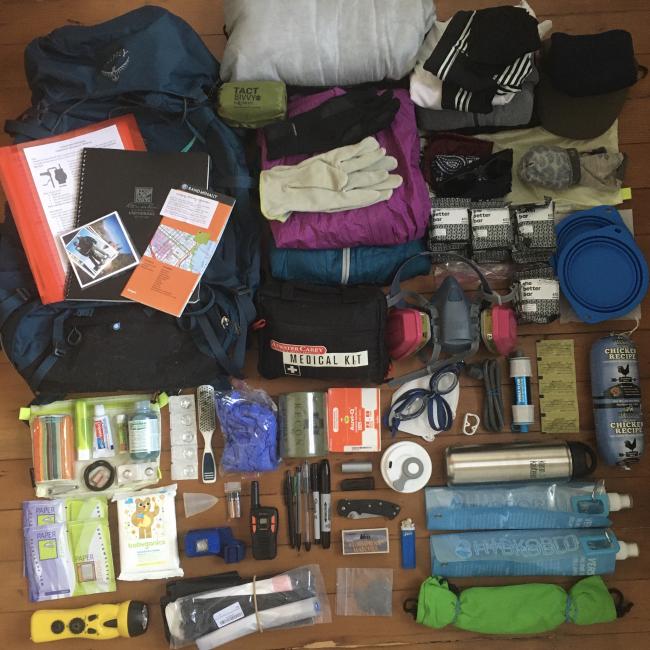
FCC to start charging $35 for ham license applications
The FCC has approved a rule charging $35 for new ham licenses and renewals. Until now, the licenses have been free, though you typically have to pay a nominal fee to a club to take the required test. The fee hasn’t been implemented yet, so if you’ve been considering a ham license, now would be a good time to go for it. (It doesn’t take long to prepare for, and in fact, you’re better off studying and testing in as short a timeframe as possible.)
https://swling.com/blog/2020/12/fcc-adopts-a-35-license-fee-for-amateur-radio-service-applications/
Read MoreGreat survival crop
I’ll be sowing Amaranth and Sorghum this year (Thanks “Redneck”). I planted Jerusalem Artichokes last year. They are great survival plants.
https://youtu.be/Eiy0F6HFqlA
Read MoreBetter gas cans
I read through the guide on storing gas but it didn’t recommend a specific type of can if you’re not going to store a large amount. I can get pretty cheap cans at the store but I know there are more heavy duty cans that are priced higher.
Are the more expensive ones worth it? Like the NATO cans for example.
Read MorePrepping organization (diary / journals / to-do / lists / etc)
I’m fairly new to prepping though I’ve been looking at The Prepared for a while now. There’s a lot going on and a lot of data to take in, and I’m feeling a little bit overwhelmed about how to organize all of it; how to prioritize all of it.
What are your ways to organize all your preps? So far I have some food and water, half constructed bug out bags, some car safety stuff. Not much for winter yet. Different things are stored in different parts of the house. My skills are also a little bit over the place.
Last night I thought about some sort of Prepping Journal, something similar to Gardening Journals, but specifically for prepping. I found a website which recommended making a bullet journal, but otherwise there really isn’t much out there.
I do feel like getting a hold of the organization will help me know where to focus and how to prioritize. I’m happy to hear how everyone organizes all of it.
Read MorePrepper closet
I’m curious if anyone else has built a dedicated prepper closet. I did so a few years ago because my wife was getting tired of my stuff being everywhere. So I cleaned out a corner of my upper barn & built a 16′ x 12′ closet. The back wall is an exterior wall & I needed one for the AC unit to keep everything cold year round. Living in north Mississippi means dealing with extreme summer heat so it is very well insulated, especially so for an interior room. Lots of junk plus extra prepper gear, such as bee hives, are stored on its roof.
Read More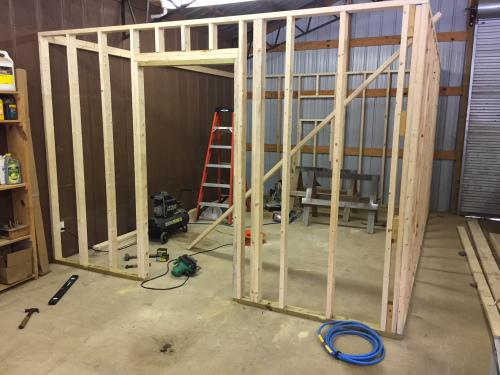
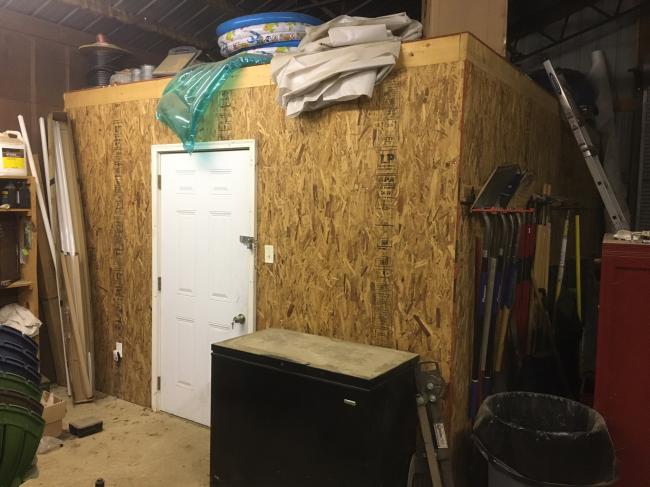
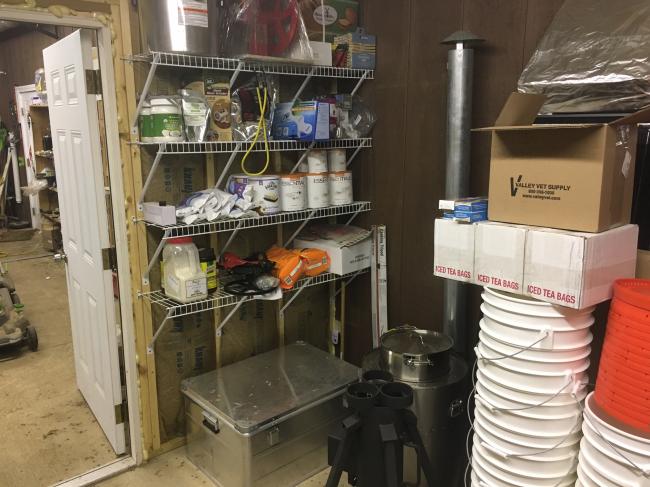
What are some good preps that don’t require you to buy something?
Some things I can think of are fitness, knowing how to cook, being able to do maintenance,…
Thought if I had a good list of preps that I can do for free, that I’ll have no excuse to keep prepping even when money is tight.
Read MoreWorried about generator noise attracting attention
Was looking at reddit when I saw question about generator noise and wanted to get some advice and your opinion on what I should do.
I have a large whole house generator that I store in a shed, but will pull out and plug into the side of my house if the power goes off for more than a couple of hours. If there was a true disaster and the whole neighborhood goes dark for a week or more, I can see this as a security issue. I don’t want my generator to be the only noise and house the only one lit up on our entire block.
I can see people trying to come and steal it, or think that I have tons of preps(which I do), coming over and asking to charge their phones, or heat something in my microwave.
I want to help others, but also keep my family and our preps safe.
Read MoreGardening books – recommendations and reviews?
This is a thread to review and recommend (or discommend) gardening and small-scale livestock books. I worked with John Ramsey on revising The Prepared’s books page (the revisions aren’t live yet), but I know that there are many more interesting books than what fit on that list. I thought it would be useful for community members to be able to recommend the books they’ve found most helpful and share about things they are reading.
To keep things organized, I suggest making each book review a separate post (even if it’s just a short paragraph), rather than listing multiple books in one post.
Read MoreCanning yourself or buying cans from the store – I found the cheaper option
I started prepping years ago. Dehydrated (freeze dried) #10 cans of food were reasonably inexpensive. Unbelievable the difference a year can make. I still buy #10 cans because today’s prices may seem cheap next year. But good deals are still available. Over the last month I’ve bought hundreds of small cans of vegetables (peas, corn, beans) for 38 cents at my Walmart. Actually both Walmarts in town have the same price. I’ve given my kids most of them. You can’t plant, grow, fertilize, and can for this price. By stocking up on these, I save time and my canning supplies for an emergency.
I took this picture 2 days ago.
Read More
Anyone have a nicely formatted 4×6 template for printing information?
Hey all!
This is sort of an oddball question, but here goes. I have lately been very in to printing out hardcopy explanations of things around the house, and laminating them. Think “Here is the writeup for how to hook up the generator with pictures and stuff, so my wife can figure it out if I am not around” or “Here is the manual for that heater, printed out on 4×6 cards, and laminated and attached to the heater with a zip tie” or “Here’s that nice printout of the ham bands in color, laminated and stuck on my FT-991a in case I forget, or get stressed”.
So originally I was printing things out on 8.5×11 paper, and doing full laminations. But lately, I have moved more towards 4×6 cards, because they are big enough to see, but small enough to carry with you, or stick in the glove box, or whatever.
So, my question is, does anyone have a nicely formatted (think, nice border, and place to put information in boxes and stuff) template for 4×6 printing? I am not a very good designer, and I’d love to have something I could plug different kinds of info in to for printing.
4×6 is sort of a weird size, so Word doesn’t have many templates for this. Thanks in advance if anyone has this!
Read More